April 7, 2015 | By Aubrey Francisco
Last month, Digital Promise launched a crowdsourcing effort on how companies use scientific research to design and develop their educational technology products. With a growing number of tools making their way into the classroom, entrepreneurs must recognize how scientific research can help them better understand students and improve outcomes. By highlighting examples of research-based product development, we aim to help all stakeholders use scientific and user research to improve student outcomes and better understand learners.
Developers responded with examples of specific research, both basic and applied, that inform their product design, and described partnerships with academic researchers that influence their work.
Below you can see the responses that best highlight what we’ve learned from ed-tech developers so far.
Mindprint Learning • myON • Remind • Sokikom • Zulama
Mindprint Learning provides a cognitive assessment developed for children that can be administered online. Results are presented in a learning profile of strengths and weaknesses along with recommendations of learning strategies and supports.
“Mindprint’s cognitive assessment was developed in the Brain Behavior Lab at the University of Pennsylvania Perelman School of Medicine. Mindprint continues to work with the researchers in the Brain Behavior Lab to expand the number of skills we assess. Each skill we add will provide more detailed insight into a child’s learning strengths and needs.”
MyON is a personalized digital literacy platform that encourages reading skill growth with digital books. It provides unlimited access to more than 8,000 enhanced digital books with multimedia supports, real-time assessments, and reading tools.
“The product management team at myON does a regular literature review of existing research to inform product strategy, design, and development. In addition, the team at myON relies on the myON advisory board (which includes several researchers), focus groups (which often zero in on particular research studies to consider), and reports from companies like SIMBA.”
Remind helps teachers connect with students and parents over mobile devices. Teachers can send one-way announcements to their entire class or chat with individual subscribers.
“Stanford’s research team is using Remind to conduct research in San Francisco Unified School District and several more large districts around the country… This work helps put numbers around the impact we hope to make, and reinforces the importance of offering a simple and accessible tool that engages students and involves parents – regardless of socioeconomic background.”
Sokikom is a game-based, social, and adaptive supplemental math program initially developed through funding from the U.S. Department of Education.
“The content side of Sokikom was built based on research from the National Mathematics Advisory Panel (NMAP) that shows a need for more focus on teaching elementary math topics in greater depth and that social and intellectual support from peers results in higher mathematics performance. The mathematical content, pedagogy, and scaffolding to the common core is also research-based, led by Dr. Theodore Chao.”
Zulama helps students develop programming, art, and design skills. The program combines Science, Technology, Engineering, and Math with the Arts (STEAM) with the goal of giving students the skills and creativity needed to thrive in the workplace.
“Research has informed both our student curriculum development and Teacher Training. In particular, the research question: ‘What is the relationship between online technology use and teachers’ sense of preparedness, implementation challenges, and time spent using [project-based learning] in the classroom?’ helped us make sure our Teacher Training addresses teacher’s needs.”
By Sava Opacic and Srdjan Perovic

We want to hear from you!
Please take this 5-minute survey and help us serve you better.
